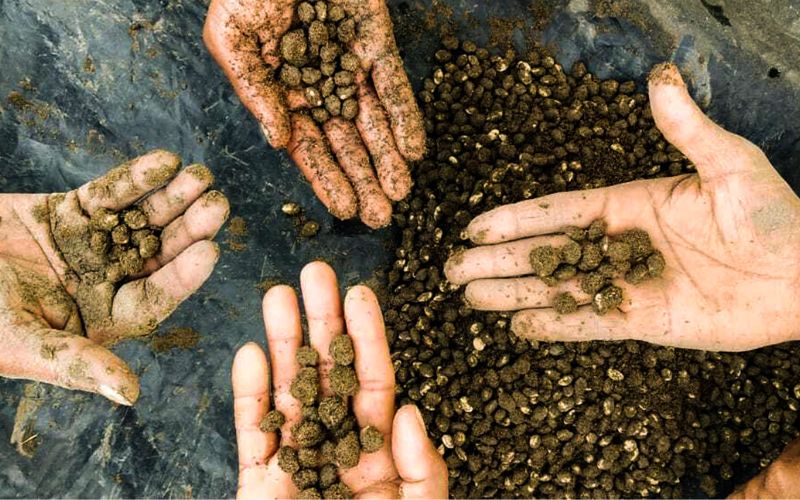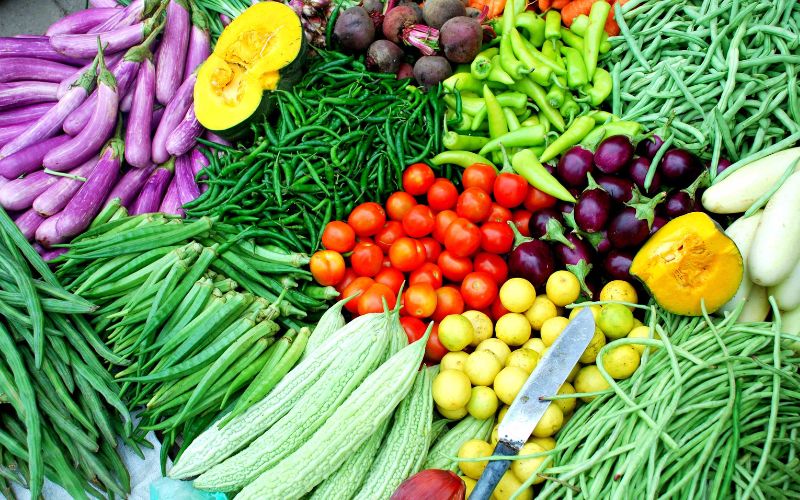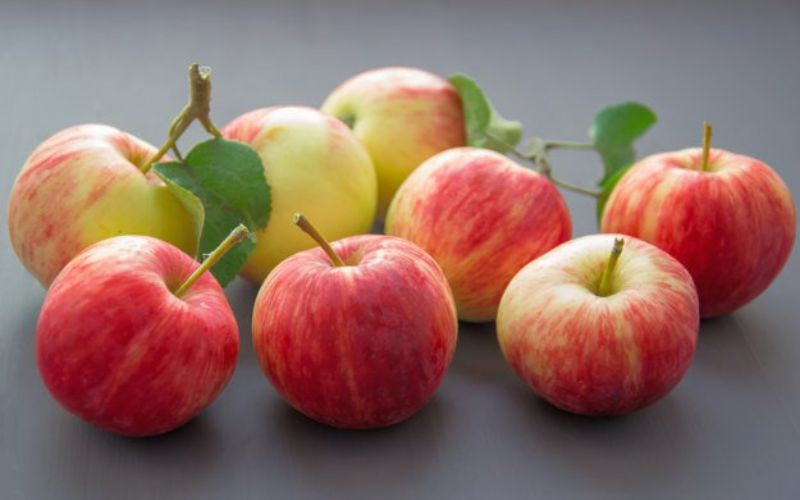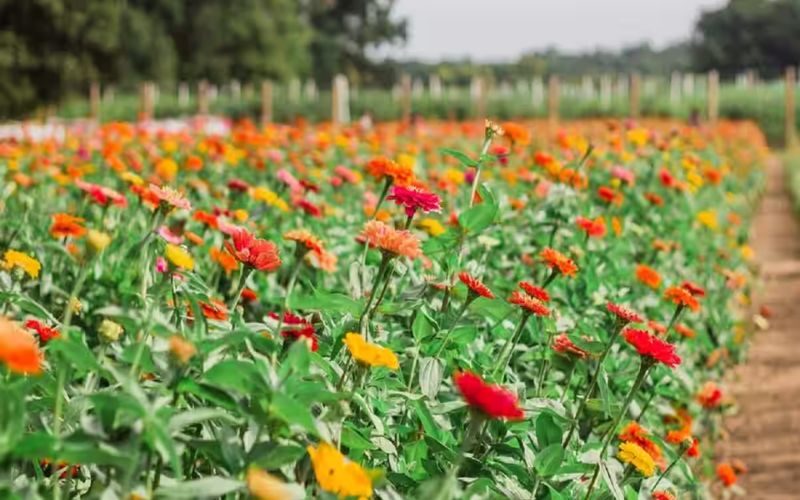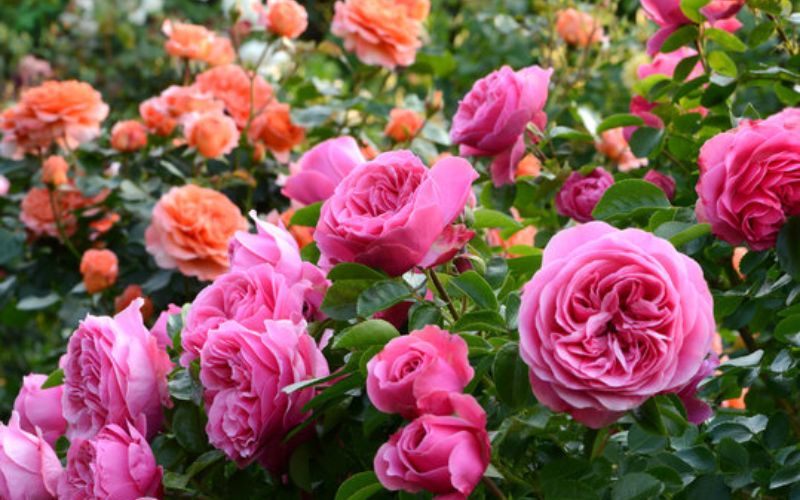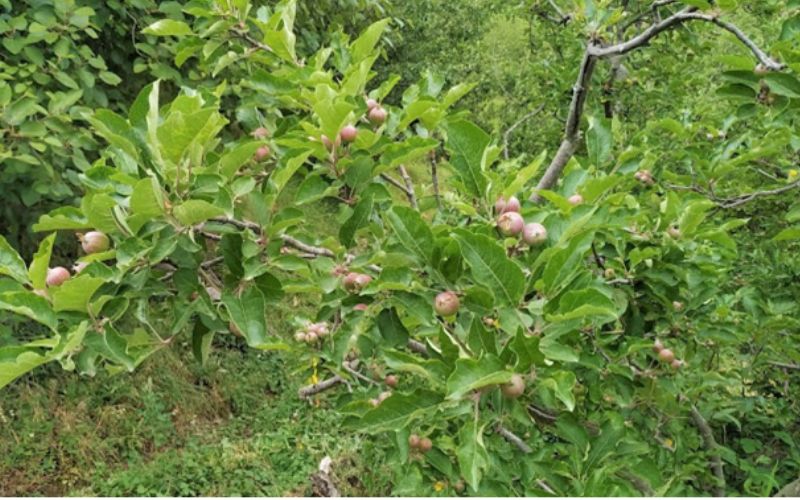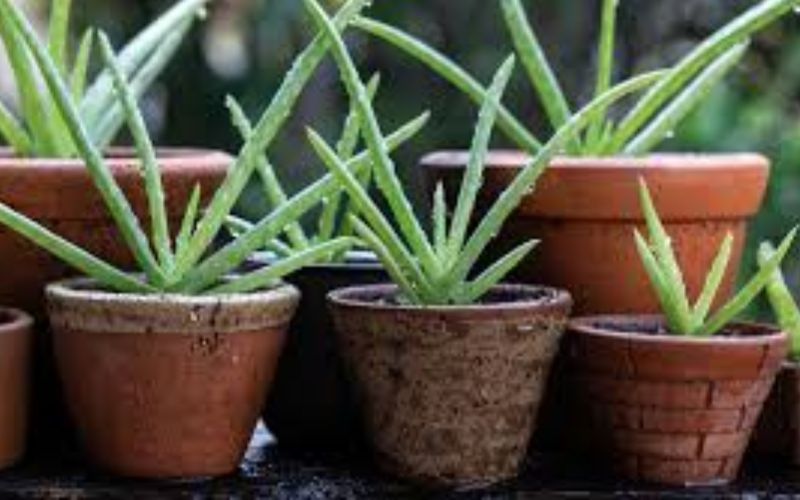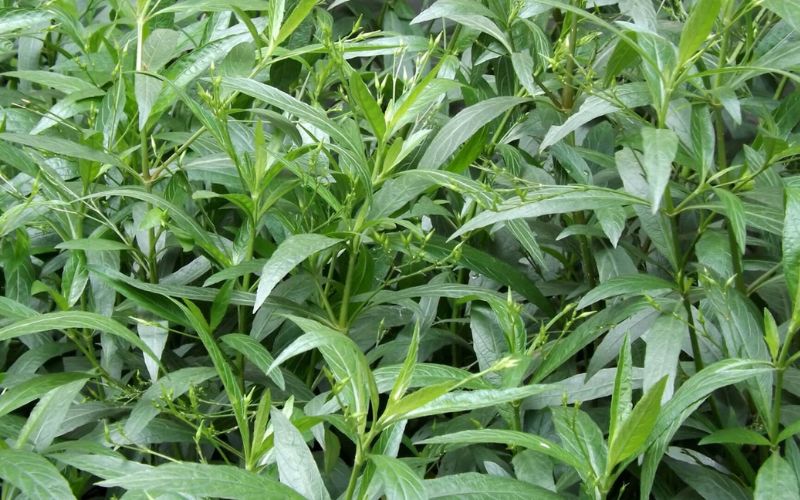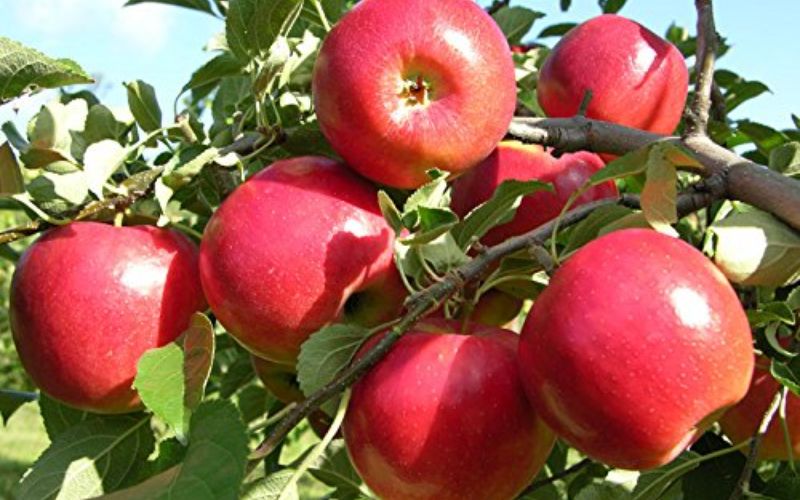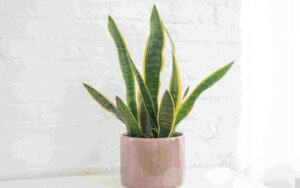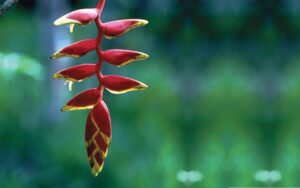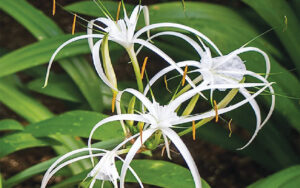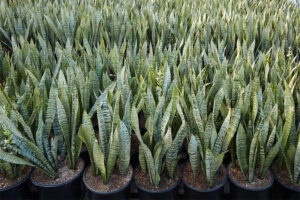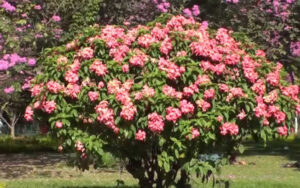Monstera: The Broken Leaf Plant
Mr. Parth Mangroliya
M.Sc. (Research Scholar),
Department of floriculture and Landscape Architecture,
ASPEE College of Horticulture,
Navsari Agricultural University, Navsari.
Mr. Ronak Mangroliya
Ph.D. (Research Scholar),
Department of floriculture and Landscape Architecture,
ASPEE College of Horticulture,
Navsari Agricultural University, Navsari.
Introduction
Monstera is a member of the Araceae family and is native to the tropical rainforests of Central America. It is a vine-like plant that can grow both indoors and outdoors. The leaves are typically heart-shaped or oblong with distinctive holes or splits, which is why it is commonly called the “Swiss cheese plant”. This distinct appearance adds a touch of elegance and tropical allure to any space. One of the reasons for Monstera’s popularity is its ability to thrive in various environments. It can be grown as an indoor plant, where it brings a lush and exotic atmosphere to homes, offices, or other indoor spaces. Additionally, it can also flourish as an outdoor plant in regions with a warm and humid climate.
What is Fenestration in Monstera ?
Fenestration refers to the natural development of holes or perforations in the leaves of Monstera plants. These holes, often referred to as “leaf fenestrations,” are a unique characteristic of Monstera species, such as Monstera deliciosa and Monstera adansonii. In their native tropical rainforest environments, where these plants climb up trees, the fenestrations help reduce wind resistance, allow sunlight to pass through to lower leaves, and promote efficient water drainage during heavy rainfall. It’s important to note that not all Monstera plants will develop fenestrations, as this trait is more commonly seen in mature plants under specific growing conditions. Factors such as age, light exposure, humidity, and genetics can influence the development of fenestrations in Monstera leaves.
Importance and Uses
Ornamental Plant: The plant’s lush, green foliage and distinctive leaf shape make it a popular choice for interior decoration, adding a tropical and exotic touch to homes, offices, and public spaces.
Air Purification: Like many other house plants, Monstera helps improve indoor air quality by absorbing harmful pollutants and releasing oxygen. Its large leaves provide a significant surface area for photosynthesis, making it an effective natural air purifier.
Indoor Gardens and Landscaping: Monstera is frequently used in indoor gardens and green walls to create lush and tropical landscapes. It can be planted as a climbing vine on structures like pergolas, trellises, or fences in outdoor landscapes, bringing a touch of natural elegance to the surroundings.
Monstera Fruit: Plants produce edible fruit, which is where the species name “deliciosa” comes from. The fruit, also known as “Monstera fruit” or “Swiss cheese fruit,” looks like a huge green cone with a scaly feel. It has a sweet, tropical flavour and is eaten in several parts of the world. However, before consuming the fruit, it must be fully ripe and carefully prepared, as unripe fruit can be hazardous.
Important Species of Monstera
M. deliciosa: “Star of the monster”, iconic, large leaves adorned with natural holes and having pineapple-banana-like fruit.
M. deliciosa Tauerii: More compact size and slower growth rate, it’s a fantastic solution for people who like the classic Monstera style but have limited space.
M. borsigiana: Fast-growing stunner delights with slightly smaller leaves.
M. adansonii: “Swiss cheese vine”, climber with charming, holey leaves, suitable for hanging basket.
M. siltepecana: Silver-green beauty with elongated leaves that sparkle with a metallic shine.
M. standleyana: Long, variegated leaves that range from white to yellow.
M. lechleriana: Large, glossy leaves peppered with numerous holes, this elegant climber bears a resemblance to M. adansonii.
M. thai constellation: A variant of M. deliciosa with creamy-yellow variegated leaves.
M. albo-variegata: Variegation of white or creamy leaves (White leaved variety).
M. aurea-variegata: “Lemon and Lime-Colored Swiss Cheese Plant”, eye-catching yellow variegation.
M. esqueleto: Rare species with dramatic leaves that resemble a leaf’s skeleton.
M. obliqua: Delicate, paper-thin leaves filled with large holes and rare houseplant is only for the most avid plant lovers.

Some Confusing Species of Monstera

Epipremnum pinnatum: “Tibatib”, “Dragon tail plant”, elongated dark green leaves with splits starting from the midrib and have minute holes at the midrib.
Rhaphidophora tetrasperma: “Dwarf or mini monstera”, heart shaped leaves but smaller than monstera and no holes near midrib.
Growing Media for Monstera

Monstera plants are frequently grown in a well-draining potting soil mix. You can either buy potting mix or make your own by combining equal quantities peat moss, perlite, and vermiculite. This mixture allows for good drainage while still keeping the plant’s roots moist. Whatever growing medium you are using, be sure it drains adequately to avoid soggy soil, which can lead to root rot.
Light Requirement for Monstera

Monstera plants prefer bright, indirect light. They thrive in areas where they receive bright, diffused light throughout the day without direct exposure to the sun’s rays. Placing them near a north or east-facing window is usually ideal, as it provides the right balance of light intensity. While Monstera can tolerate some direct sunlight, prolonged exposure to intense, direct sunlight can scorch and damage their leaves.
Watering

Before watering, check the moisture level of the soil by inserting your finger about an inch (2.5 cm) into the soil. If it feels dry at that depth, it’s time to water. Avoid overwatering, as Monstera plants are susceptible to root rot. When watering, ensure that thoroughly saturate the soil until water runs out of the drainage holes. This helps ensure that the entire root system receives sufficient moisture. Misting is also helpful for maintain humidity.
Propagation

Monstera can be easily grow by mean of stem cutting. Cutting should have root nodes which helps in better and faster root development. Put the cutting in water for the initiation of roots then plant it in the soil which gives higher results for the successful establishment.
Fertilization

Monstera require some amount of fertilizer for its better growth. Apply Vermicompost or FYM every month is ideal for the plant. Nitrogen rich fertilizer helps to increase lush green colour.
Plant Protection
Monstera does not affect with any serious pests and diseases but sometimes it is affected with mealy bug, root rot and leaf spot disease.
 Mealy bugs: Mealy bugs are small, white insects that cluster on the leaves, stems, and leaf nodes. They can cause leaf discoloration and weaken the plant. Remove them manually with a cotton swab dipped in rubbing alcohol or use insecticidal soap. Neem oil @2-5 ml/litre of water shows significant result on controlling of mealy bugs.
Mealy bugs: Mealy bugs are small, white insects that cluster on the leaves, stems, and leaf nodes. They can cause leaf discoloration and weaken the plant. Remove them manually with a cotton swab dipped in rubbing alcohol or use insecticidal soap. Neem oil @2-5 ml/litre of water shows significant result on controlling of mealy bugs.
 Root Rot: Root rot in Monstera plants can be a common issue if the plant is overwatered or if it is planted in a poorly draining soil mix. Remove affected roots, repot the plant and focus for better drainage. Use fungicide at the time of repotting.
Root Rot: Root rot in Monstera plants can be a common issue if the plant is overwatered or if it is planted in a poorly draining soil mix. Remove affected roots, repot the plant and focus for better drainage. Use fungicide at the time of repotting.
 Leaf Spot Diseases: Fungal or bacterial leaf spot diseases can cause dark, water-soaked spots on the leaves. Avoid overhead watering, as moisture on the leaves can promote these diseases. Remove affected leaves and ensure good air circulation around the plant. Fungicidal sprays may be necessary in severe cases.
Leaf Spot Diseases: Fungal or bacterial leaf spot diseases can cause dark, water-soaked spots on the leaves. Avoid overhead watering, as moisture on the leaves can promote these diseases. Remove affected leaves and ensure good air circulation around the plant. Fungicidal sprays may be necessary in severe cases.
Problem while Caring of Monstera
Yellowing Leaves
It is due to following characters:
 Overwatering or under watering: Too much or too little water can turn Monstera leaves yellow. Overwatering damages roots by preventing them from absorbing oxygen, which keeps the plant from getting the water and nutrients it needs. Under watering can result in a Monstera with yellow leaves that may be limp, dry, or crispy-edged.
Overwatering or under watering: Too much or too little water can turn Monstera leaves yellow. Overwatering damages roots by preventing them from absorbing oxygen, which keeps the plant from getting the water and nutrients it needs. Under watering can result in a Monstera with yellow leaves that may be limp, dry, or crispy-edged.
Lack of Nutrients: Insufficient supply of a nutrients cause the yellowing of leaves. Apply proper amount of fertilizer.
 Pot-Bound Roots: Monstera’s roots are growing out of the hole in the bottom of the pot, that’s a sign that the plant is pot bound. Pot bound roots become compacted, meaning they can’t absorb water or nutrients from the soil, which can cause leaves to turn yellow and affect the overall health of your plant.
Pot-Bound Roots: Monstera’s roots are growing out of the hole in the bottom of the pot, that’s a sign that the plant is pot bound. Pot bound roots become compacted, meaning they can’t absorb water or nutrients from the soil, which can cause leaves to turn yellow and affect the overall health of your plant.
Browning Leaf Tips
 Browning leaf tips can be a sign of low humidity, under watering, or build-up of salts in the soil. Increase humidity levels by misting the leaves, using a humidifier, or placing a tray of water near the plant. Ensure about watering your Monstera adequately and flushing the soil periodically to prevent salt build up. Almost in all cases, it is due to watering problem either by overwatering or by under watering. Fix the watering schedule.
Browning leaf tips can be a sign of low humidity, under watering, or build-up of salts in the soil. Increase humidity levels by misting the leaves, using a humidifier, or placing a tray of water near the plant. Ensure about watering your Monstera adequately and flushing the soil periodically to prevent salt build up. Almost in all cases, it is due to watering problem either by overwatering or by under watering. Fix the watering schedule.
Leggy Growth or Lack of Fenestration
Insufficient light can cause leggy growth and lack of fenestration (natural holes in the leaves). Move Monstera to a brighter location with indirect light to promote compact growth and encourage fenestration.


